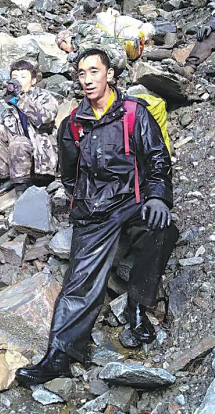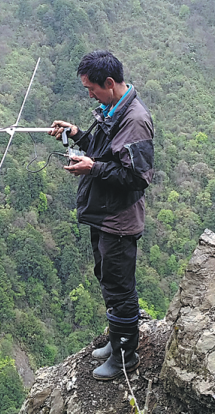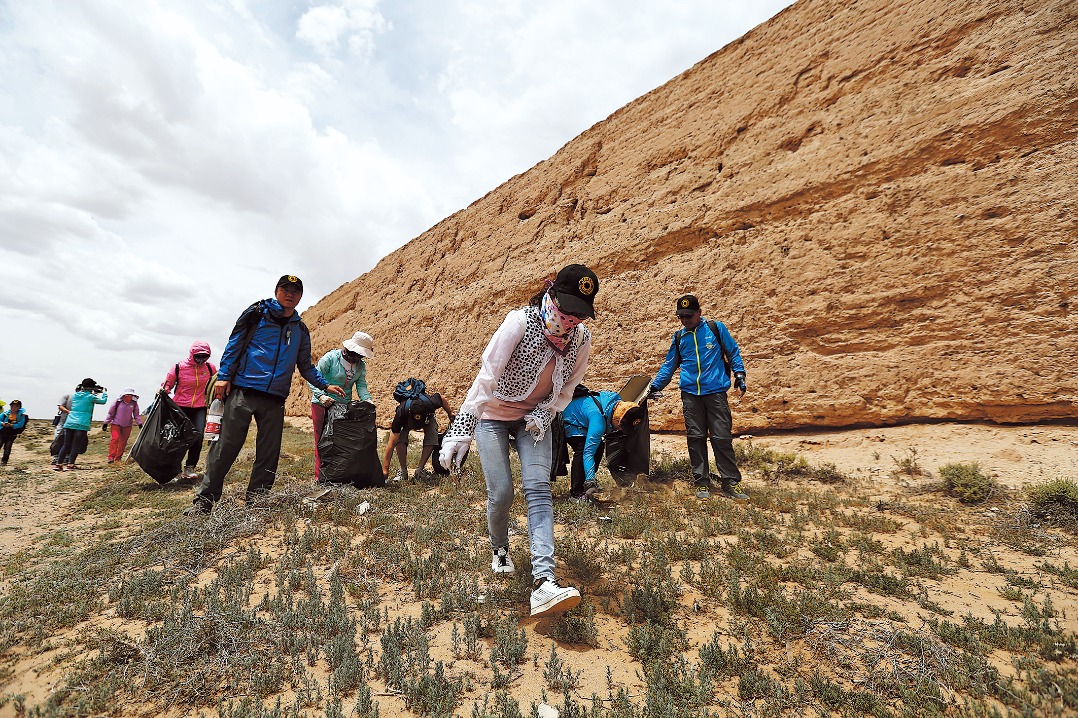Panda caretaker embraces less to ensure conservation
The challenges and routines of reintroducing captive-bred offsprings into the wild

Many still remember the devastating 8.0 magnitude earthquake that struck Wenchuan, Sichuan province, in 2008. The quake also damaged the breeding bases of the China Conservation and Research Center for the Giant Panda.
That year, part-time cleaner Mu Shijie, driven by his love for the national treasure, voluntarily dedicated himself to the restoration, reconstruction and relocation work at the panda base. After a month of effort, he was officially recruited as a caretaker.
Sixteen years later, Mu has evolved into an experienced trainer who helps giant pandas to be reintroduced into the wild.
"Giant panda reintroduction is about releasing bred giant pandas back into the wild after undergoing wilderness training to revitalize the wild giant panda population," Mu explained.
During the first stage of wilderness training, caretakers move a giant panda mother to a training enclosure at the base. These enclosures span thousands of square meters and are built on mountains, resembling natural environments.
To simulate living in the wild, caretakers ensure that cubs do not see humans. When feeding their mothers, they wear panda suits sprayed with the smell of panda urine.
"We must ensure that the cubs do not see us feeding their mother and do not come into contact with any artificial food. The main diet for giant pandas is bamboo. Feeding the mother ensures ample milk production because the cubs primarily rely on milk before bamboo," Mu said."This approach maximizes the cubs' independence from humans. It ensures they will naturally avoid humans rather than seek them out."
When the cubs reach around one year old, they are transferred with their mothers to larger enclosures with more complex natural environments, gradually learning to feed on bamboo independently. Eventually, when the cubs are close to adulthood and possess the skills to survive in the wild, they are released back into their natural habitat.
Due to his work, Mu lives in the mountains year-round, descending every two weeks for supplies and brief rest. Mobile signal reception in the mountains is intermittent, and the comforts of modern life are sparse.
Mu described the wild environment as challenging, with frequent extreme weather like heavy rain and hail. He starts his day by turning on a radio receiver to monitor the giant pandas' signals, then sets out with the mother panda's food, a walkie-talkie and a satellite phone to patrol the enclosures. He spends about four hours circling the enclosure each day, sometimes returning to the campsite close to nightfall.
"Daily monitoring of giant pandas in the wild is our routine work, twice a day," he said.
Due to years of traversing rugged terrain, Mu underwent knee surgery for severe meniscus wear. As soon as he began to recover, he returned to his post.
"The work of reintroducing giant pandas into the wild is more demanding than that of captive caretakers. Wilderness trainers must establish a sense of familiarity and trust with the panda mothers to carry out tasks like fitting them with GPS collars and collecting and returning cubs," he explained.
Wilderness trainers also have a unique task. Once a month, they fit the giant panda mothers with recording devices for 72 hours of audio recording."We analyze mother-cub interactions, feeding behavior, nursing behavior and more by listening and recording," he said.
Mu recalled an incident involving a panda cub named Qin Xin, who, after being transferred to the wilderness enclosure at Tiantai Mountain, managed to escape five times by digging under the enclosure fence, each time venturing farther away. Mu relied on the recordings from the collar on Qin Xin's mother, Shu Qin, to confirm the cub had returned to nurse at night.
"It was frustrating to climb mountains and wade through water to find and bring it back to the enclosure, only for it to escape again the next day from another spot under the fence. But it was also satisfying because this is the result we aim for in wilderness training — full of wild instincts, learning the skills for survival in the wild, and being capable of living independently in the wild," he said.
The memory of Mu's first successful giant panda cub reintroduction is etched clearly in his mind. From birth to release, Tao Tao's journey back to the wild spanned 26 months and seven days.
"Seeing it walk out of the enclosure, darting into the bamboo forest, it was a mix of feelings, very sad,"Mu recalled.
He talked to himself as if talking to the giant panda:"Tao Tao, I wonder if we will ever meet again in this lifetime. We hope you will grow up safe and healthy in nature, utilizing all the skills your mother has imparted to you, establishing your own territory, finding a mate when you reach adulthood, and flourishing with offspring. We eagerly await your good news! Wishing you all the best! Goodbye!"
Mu's son, Mu Changyu, followed in his father's footsteps to become a giant panda caretaker.
"When I was young, accompanying my father to work allowed me to interact with many giant pandas, fostering a certain affection for them," he said.
"I genuinely want to pass down these nurturing experiences for pandas through the generations. The methods passed down to me by my father, I, in turn, pass on to younger caretakers. With experience, our pandas can grow up healthy and strong," he added.
In recent years, China's efforts in natural forest conservation, protection of wildlife and plants, and the establishment of the Giant Panda National Park have advanced the conservation of giant pandas and their habitats. The population of wild giant pandas has increased from around 1,100 in the 1980s to nearly 1,900.
Experts explain that reintroducing captive-bred giant pandas back into the wild after wilderness training helps enhance genetic diversity and reduce the risk of extinction within small populations, thereby aiding in the recovery and rebuilding of wild giant panda populations — a crucial step in giant panda conservation.
Li Ren contributed to this story.



Today's Top News
- Xi, Bolivian president exchange congratulations on 40th anniversary of diplomatic ties
- China's CPI up 0.1% in June
- 'Shanghai Spirit' reflects strength and resilience
- Macron arrives for UK state visit
- US tariffs pose danger to ASEAN countries
- 8 held after children found with abnormal blood lead levels






























